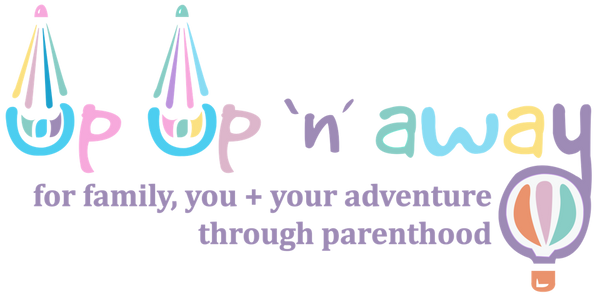All children develop at their own rate, generally in the same sequence but at completely different times. Many things influence a child’s development – genes, environment, temperament, relationships, nutrition, health and physical activity. Some of these things you can control such as diet and environment, others you cannot.
Physical Development & Motor Skills
Below are some of the major physical milestones most children may overcome during their preschool years.
Between 3-4 years:
- Running and jumping with more grace and control, but may still have trouble landing on two feet.
- Climb stairs using railings or walls for support.
- May find it easier to manoeuvre around objects and show more special awareness.
- Run in a straight line and around obstacles at a steady pace and stop and change direction more easily.
- At 3 years children can generally walk without watching their feet.
- Learn to walk and/or run backwards in a straight line.
- Your child's balance will be developing, and they may be riding trikes, bikes, scooters or rollerblades with more confidence.
- Children can usually roll sideways and enjoy tumbling.
- Improving their ball-play and hand-eye skills and coordinating their movements they can throw, catch and kick with more precision.
- Refining their hand-eye skills by using scissors, staples, pens, crayons etc.
- Around the age of 4 children may begin to show a preference towards being either right or left-handed - but many are still ambidextrous.
- Children by the age of 4 are generally capable of hand washing, brushing their teeth, dressing and undressing and feeding themselves – with ongoing encouragement and occasional assistance from you.
Between 4-5 years:
- May physically play for longer as their stamina and energy levels develop.
- Generally running, climbing and jumping with greater ease and coordination.
- May be walking evenly - heel to toe, judge their footing while climbing and hop on one foot both forwards and backwards.
- Spatial awareness is further developing, and school age children generally avoid colliding with others.
- By 5 years most children are better at writing, drawing and using fine tools.
- May be drawing shapes and objects which are recognisable.
Social & Emotional Development
Children naturally feel more secure with familiar adults around them when they are playing, as they still need security and reassurance and may still ask grownups for help when problem arise. Their independence is steadily growing, and they will begin to show interest in friendships with other children.
Socially, your child is generally happy to play alongside other children during their first year of kindy and may start to include or ask other children to play around the age of 4 or 5. They may approach other children and show an interest in joining them in their activity but may still look to grownups for encouragement to get involved.
It is common for kids to mimic and copy other children’s actions, expressions or behaviours. This will assist with their ability to express feelings using tone of voice, facial expressions as well as help them with learning to read other people. During this time children are usually starting to develop coping strategies for their feelings, such as talking about it or writing or drawing.
Between the ages of 3 and 4, most kids at this age tend to want to help others or comfort those in need but may not do so appropriately as they try to understand what will help. Empathy is still being developed and children are beginning to realise that not everyone feels the same about things as they do. By the time they reach 5 years children may be offering solutions to minor problems and may be learning to comfort and sooth others more appropriately.
Language
Between the ages of 3 and 5 years, your child may be managing longer and more complex sentences about many different topics.
Below are some of the major speech and language milestones most children may overcome during their kindy years:
- May have basic understanding of grammar.
- By 4 years may be able to say between 500 and 1000 words, but will understand. hundreds if not thousands more.
- Learning connecting words such as “if” “because” or “and”.
- May use more plurals or collective names.
- By 4 years your child may know the names of colours, shapes and symbols.
- May be using descriptive words such as “longer” “shorter” or “further”.
- By 4 years your child will usually order words correctly.
- May tell stories which have more cohesive structure, including a beginning and an end.
- Children may be using more language in play - giving instruction, taking turns, or acting out characters.
- By 5 years your child may be able to say between 1500 and 2000 words but will be able to understand hundreds or thousands more.
- Children may be using many connecting words with ease.
- Children may use more complicated descriptive words about their feelings such as “embarrassed” or “confused” with a clearer understanding of their meaning.
- May start to join sentences together in different ways.
- Begin to make jokes and use language to playfully tease another person.
- By 5 years kids may be forming sentences of up to 9 or 10 words.
- Children may be talking about past or future events instead of only current events.
- Using adjectives, past tense and plurals.
- Pronunciation may almost fully develop by the age of 5.
- Your child will still be developing their storytelling structure.
- By the age of 5 your child may be better at turn taking in conversation.
- Appropriate volume and pitch being used more consistently in conversation.
- Children may be using their manners more often on their own accord without being prompted or reminded.
raisingchildren.net.au. (2020, August 13). Child development: the first five years. Retrieved from https://raisingchildren.net.au/toddlers/development/understanding-development/development-first-five-years
raisingchildren.net.au. (2020, March 13). 3-4 years: preschool development. Retrieved from https://raisingchildren.net.au/preschoolers/development/development-tracker/3-4-years

